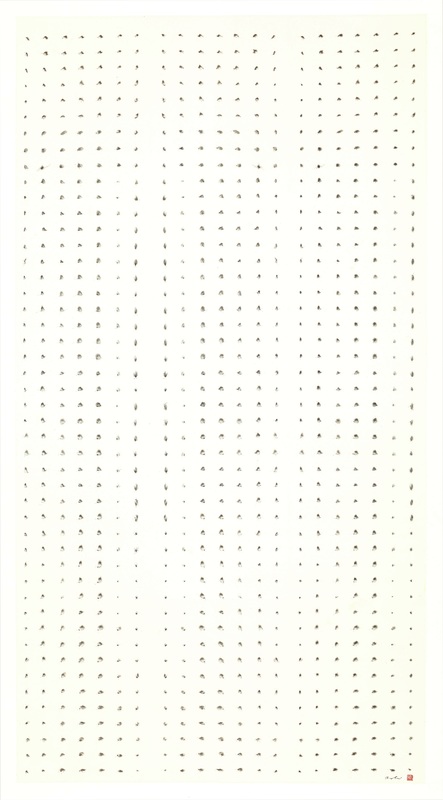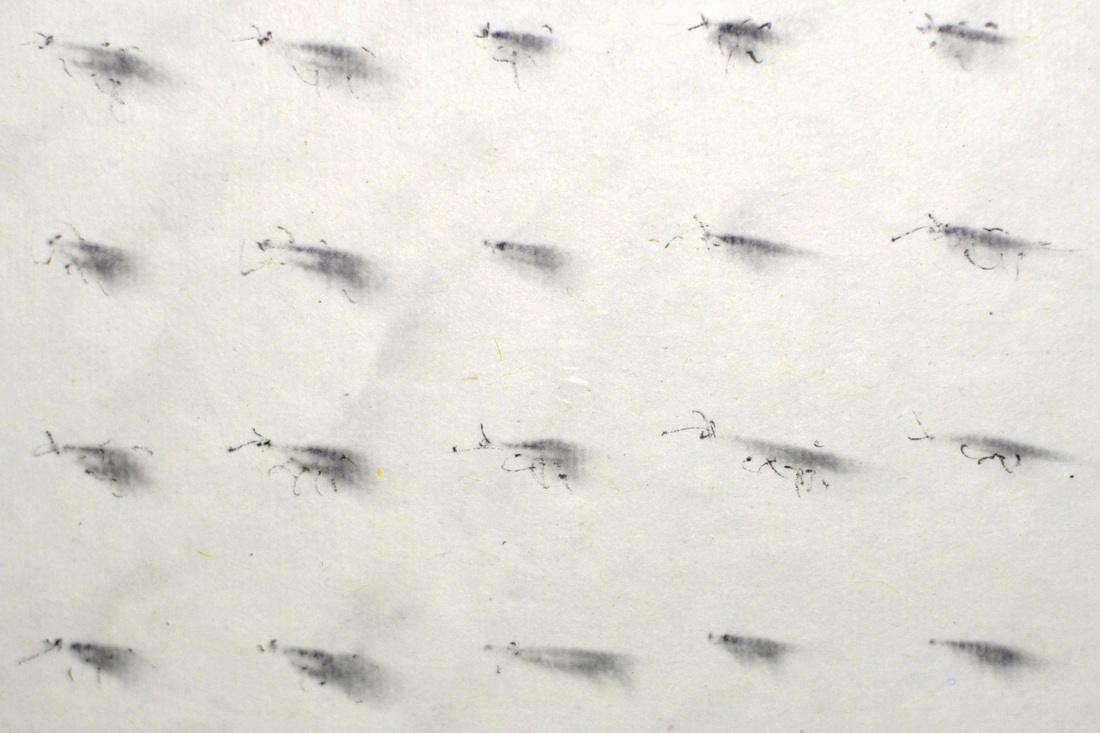繪畫六法--應物象形 The Six Principles of Chinese Painting: Correspondence to the Object
繪畫六法--應物象形
作品重新演釋「繪畫六法--應物象形」*,在概念框架下,熊輝邀請父親──熊海──參與實驗計劃。熊輝於經摺疊、濕透的宣紙上,依規律重複地注入大量墨點,讓其滲化。然後邀請父親,按化開的抽象圖案,畫出他的聯想。以遊戲般的實驗呈現聯想的可能性。
*「繪畫六法--應物象形」出自六世紀時的中國畫家、藝術理論家謝赫,載於其著作《古畫品錄》中的序論。
作品重新演釋「繪畫六法--應物象形」*,在概念框架下,熊輝邀請父親──熊海──參與實驗計劃。熊輝於經摺疊、濕透的宣紙上,依規律重複地注入大量墨點,讓其滲化。然後邀請父親,按化開的抽象圖案,畫出他的聯想。以遊戲般的實驗呈現聯想的可能性。
*「繪畫六法--應物象形」出自六世紀時的中國畫家、藝術理論家謝赫,載於其著作《古畫品錄》中的序論。
The Six Principles of Chinese Painting - Correspondence to the Object
Reinterpreting “The Six Principles of Chinese Painting - Correspondence to the Object” *, Hung Fai created a concept framework, under which his father Hung Hoi was invited to participate in an experimental project. On the xuan paper, folded and wetted, ink dots were injected in profusion and set to diffuse. His father was then invited to draw his associations based on the diffused abstract image. Through the game-like experiment, possibilities of mental associations were shown.
* “The Six principles of Chinese Painting - Correspondence to the Object” was established by Xie He, a Chinese painter and art critic in sixth century AD, in the preface of his book "The Record of the Classification of Old Painters".
Reinterpreting “The Six Principles of Chinese Painting - Correspondence to the Object” *, Hung Fai created a concept framework, under which his father Hung Hoi was invited to participate in an experimental project. On the xuan paper, folded and wetted, ink dots were injected in profusion and set to diffuse. His father was then invited to draw his associations based on the diffused abstract image. Through the game-like experiment, possibilities of mental associations were shown.
* “The Six principles of Chinese Painting - Correspondence to the Object” was established by Xie He, a Chinese painter and art critic in sixth century AD, in the preface of his book "The Record of the Classification of Old Painters".











